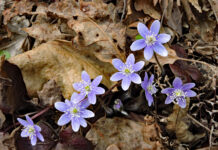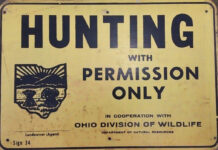The ruffed grouse population in Ohio has really suffered over the past few decades, mainly because of habitat loss.
As urban areas grow and land use changes, the young forests that grouse need for nesting and foraging are disappearing. These habitats, filled with young trees and thick underbrush, are becoming harder to find, which leaves grouse struggling to find good spots to thrive.
Modern forestry practices have further exacerbated the problem. Current logging methods often prioritize mature timber, neglecting the need for young forest stands that support grouse.
This shift in land management limits available habitats, making it more challenging for grouse to find food and shelter. Additionally, increased predation from animals like raccoons and foxes, as well as competition with other bird species, adds further stress to their populations.
Changing weather patterns also pose a significant threat to grouse in Ohio.
Changes in temperature and precipitation can disrupt vegetation growth and the timing of seasonal events, impacting the ecosystems that grouse depend on. These environmental shifts can reduce reproductive success and overall population stability.
Farmers can make a big difference in the situationby helping grouses out. Simple things like keeping buffer zones of native plants, creating small patches of young forest, and using fewer pesticides can help.
Plus, getting involved in conservation programs that promote sustainable farming practices can create a better environment for grouse.
In the end, these efforts can benefit both wildlife and farming, creating a win-win situation.














While all valid reasons the author missed two. West Nile virus is the cheif cause plus ground predators ( raccoons in particular).West Nile has been identified as the main reason in PA and I would think Ohio is not much different. Areas in PA are now bouncing back but without widespread timber cutting in Ohio ,along with control of predators and favorable nest seasons -I don’t hold out much hope. West Nile has devastated song bird populations in affected areas.
I am afraid ruffed grouse will go the way of Bob white quail in Ohio.
The treehuggers stopped logging for a long time the state finally won in court to be allowed to cut again.hawks are hard on them too
West Nile. The biggest cause. Pa – Ohio Michigan. I have not shot a grouse in PA for 10 years. Our cover is still good. . When only 10-20 % of young live past 6 months. Still hunt Michigan but see half the birds . Hate to say it but you sound like a tree hugger.
Sterling is too young! He doesn’t mention skunks, or west Nile or possibly avian flu,now we have black-legged ticks, Lyme disease?? No I’m not a biologist,some counties in Ohio still cut timber.State of Ohio doesn’t give a sh** about small- game.